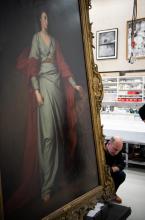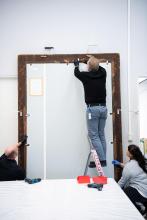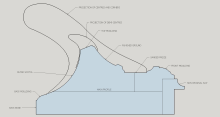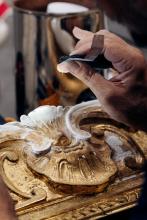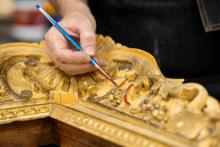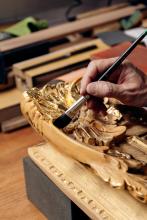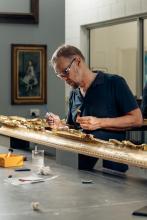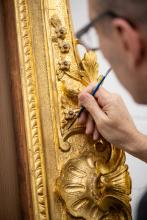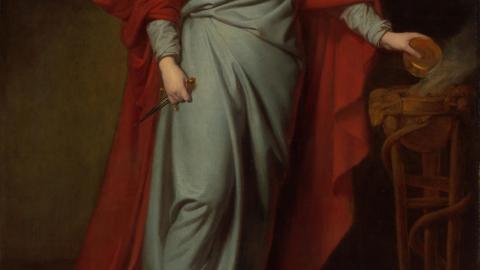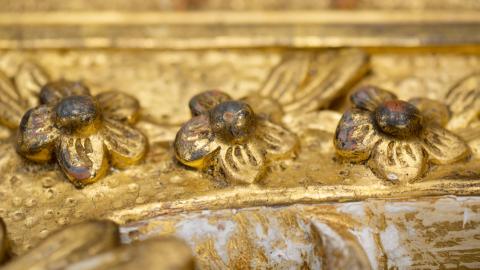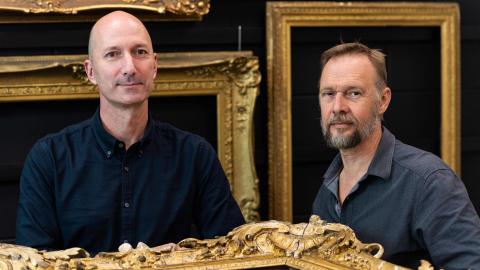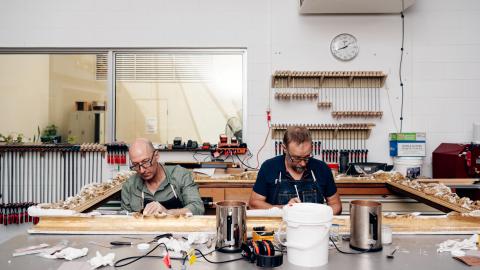Restoring luxury
Repairing the Romney frame
Nearly three metres long and two across — and gilded entirely in gold leaf — the imposing frame for George Romney’s 1771 painting, Mrs Yates as the Tragic Muse, Melpomene is a time capsule of framing fashions, repairs and interventions. There’s no way (yet) of knowing whether this is the painting’s original frame — but QAGOMA’s expert Conservation Framer, Robert Zilli, considers restoration work something of an archaeological dig.
Before and after restoration (2022–24)


The big reveal: views of Mrs Yates as the Tragic Muse, Melpomene 1771 before frame restoration (QAG, 2011) and after (QAG, April 2024) / Photographs: R Fulton and J Ruckli, QAGOMA
How was this frame made?
ROBERT ZILLI: This frame appears to be made of Scots pine — Pinus sylvestris, also known as ‘deal’ — a common timber used in English frame-making. Different countries used different timber: in southern Europe (Italy, for example) they use a lot of poplar; in France and probably Spain, a lot of oak and chestnut. The English use a lot of oak and pine.
The frame is composed of sections of laminated timber — that is, where lengths of timber are glued together to roughly form the shape and the size of the frame’s profile. It’s not one section of timber.
Up to four different trades would have been employed in making a frame like this: a carpenter or cabinetmaker would laminate timbers together to get the rough shape, then use moulding planes to shape the frame’s profile.

Conservation framer Robert Zilli hand-carves details into the Romney frame as part of the restoration process, October 2022 / Photograph: C Callistemon, QAGOMA
Next the frame’s ornaments were created by a carver or a sculptor. In areas of high relief, such as centres and corners, they’d insert blocks of timber that they could carve back into. Once the frame’s structure was completed, it would have to been sent to the gilder’s studio. Here the frame was prepared for gilding. Firstly, several layers of gesso [a mix of glue and chalk] would be applied to the entire frame and smoothed to a marble-like finish. They would re-cut all the fine detail — the veins in the leaves and the petals and the flowers — to sharpen it up. The next step would be to apply a layer of coloured clay called bole. This layer was then burnished to an ultra-smooth finish in preparation for gilding. The gilder applied the gold leaf to the frame, with a combination of matte and burnished areas.
So there were a lot of steps — from the rough timber moulding to the finished product. Frames of this quality were expensive luxury items that only a few could afford.
(l–r) The Romney frame’s paired painting is removed by conservators at QAG, May 2022 / Photographs: N Harth, QAGOMA; profile-view diagram of the Romney frame’s ‘anatomy’, January 2023 / Image courtesy: R Zilli, QAGOMA
Restoring the Romney frame
With the frame cleaned and with 250 years’ worth of DIY quick fixes — diplomatically called ‘interventions’ — restored, Robert Zilli and Damian Buckley can repair damage to carved sections and, in time, restore its luxurious gilded finish. Throughout this process, QAGOMA’s Conservation Framing team take on every one of the traditional trades detailed above: carpentry, carving, sculpting and gilding.
Conservation of the Romney frame began mid–2022 and was completed in early 2024.
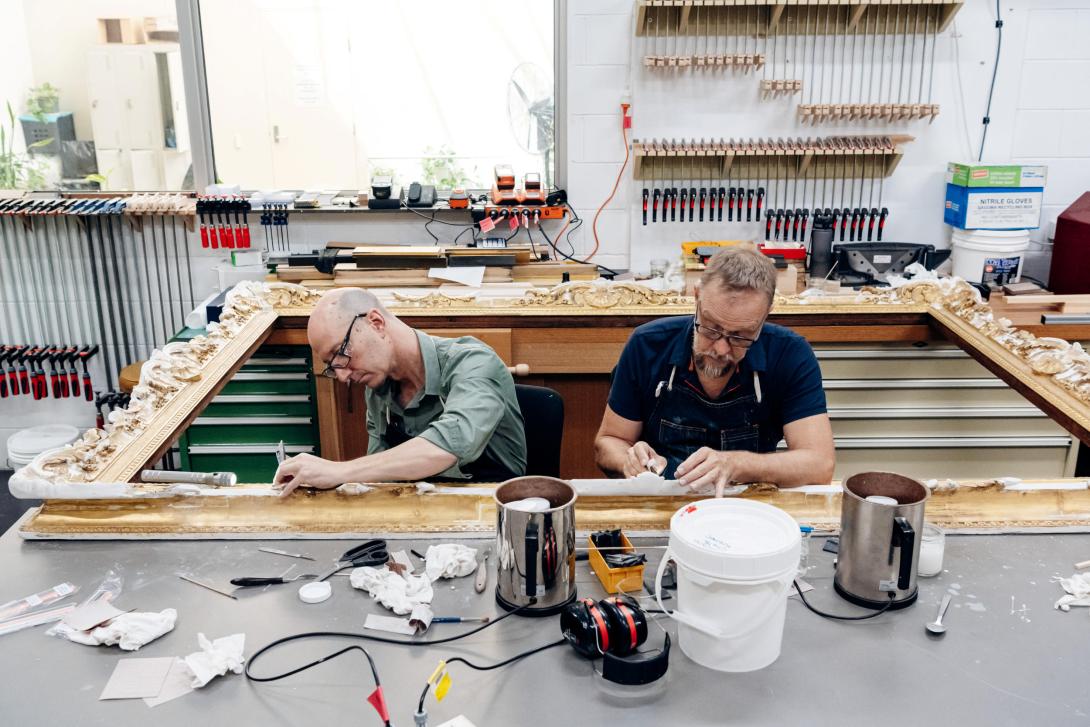
Robert and Damian repair the Romney frame's gesso layer before sanding it to a smooth finish, QAG, January 2024 / Photograph: J Ruckli, QAGOMA
Robert and Damian restore the frame’s gesso and bole layers, ahead of gilding, QAG Framing Studio, early 2024 / Photographs: J Ruckli and C Callistemon, QAGOMA
DISCOVER MORE: George Romney’s portrait of a tragic star
George Romney was one of the most successful portraitists of the late eighteenth century, and his work is found in significant collections across the globe. His sitters, who were predominantly female, were often leading social figures or celebrities.
Mary Ann Yates (1728–87) was a successful figure in Georgian theatre who was nearly 20 years into her acting career at the time of this portrait. Known for her roles as Shakespearean heroines . . . [READ MORE]
